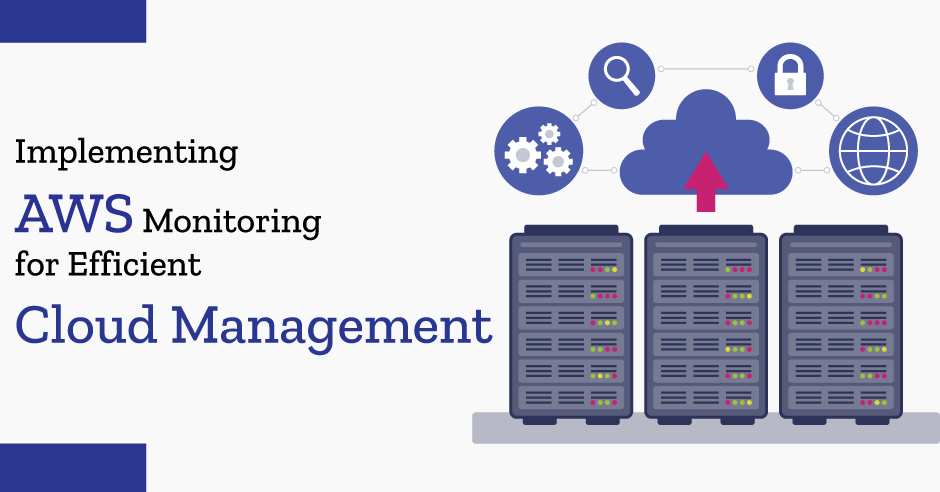Cloud Management is a process used by admins of various companies to control everything that operates with the cloud. All the cloud-based data, users, services and applications can be managed and cloud activity can be easily checked. Various cloud management tools are available for controlling different cloud activities like resource deployment, data integration, tracking use and even resource deployment. These cloud management tools allow companies to have administrative control over their infrastructure, applications, and platforms.
How does Cloud Management Softwares Work?
Cloud Management Softwares are normally used with an existing cloud environment. It acts as a virtual machine that has the required database and a server. The server is used for communicating with the API (Application Programming Interface), as it connects the database with the virtual resources, in the cloud. The database is also used for collecting information regarding the performance of the virtual infrastructure. It also analyses the data and sends it to the web interface- where it is visualized by cloud admins who check the cloud performance. The Virtual Server is also used by cloud admins to forward commands back to the server.
What is AWS Monitoring?
AWS Monitoring allows the user or the company to collect, monitor and analyze their cloud resource and performance more efficiently. AWS Monitoring has great performance because of its streamlined and troubleshooting and quick resolution of issues. It allows a minimized occurrence of errors during the runtime. These monitoring metrics also help in optimizing AWS resource consumption. However, you need to make sure that cloud apps are always online if you want a better performance. AWS monitoring is the perfect answer for IT infrastructure solutions
How can you enjoy the benefits of AWS Monitoring?
If you want to enjoy the benefits of AWS monitoring and integrate it easily into the IT processes of your company, then you need to have a simplistic approach. You should always go for better performance because it allows you to track real incidents with rules that are simple, reliable and more or less predictable. You can enjoy various IT security solutions if you implement AWS monitoring.
What are the Key metrics recommended for AWS monitoring?
Usually, companies that implement AWS monitoring try to track as many metrics as they can. However, this is a very common mistake that these companies make. Tracking too many metrics can lead to the creation of an overly complex system that can become too hard to maintain over time.
While implementing AWS monitoring into your system, you can also contact cloud support experts who can help you out in the entire process of implementing monitoring. They can also help you to identify the proper resources and events that can greatly affect the performance of all your cloud-based applications. The following key metrics are recommended for AWS monitoring:
- 1. Latency or the time required to respond to a particular user request
- 2. Traffic or the total number of a user request that is accepted by the system per second.
- 3. Errors or the number of user requests that get terminated or fail.
- 4. Saturation or the efficiency of resource management.
How to implement AWS monitoring?
There are several rules that one must generate while implementing AWS monitoring. These rules form the basic architecture of an entire monitoring system. Companies usually hire cloud experts to do this job. Given below are some basic guidelines.
- 1. All the monitored conditions should be extremely actionable, urgent and it must affect users.
- 2. The defined rules must detect unrecognizable conditions that would usually remain unnoticed.
- 3. These rules should only alert the personnel entitled to resolve a particular issue.
- 4. All alerts and notifications should be decreased to a basic reasonable number.
- 5. To minimize any type of human intervention, an automatic alert response should be generated.
- 6. However, the key aspect of AWS monitoring is addressing system security. Security issues vary from industry to industry and need to be taken care of accordingly. AWS monitoring is only beneficial when IT security services are taken care of.
What are the recommended tools for AWS monitoring?
There are different tools available for a company to choose from when it comes to AWS monitoring. Tools like Zabbix, Amazon CloudWatch, Prometheus, Nagios, etc can be used. You can also combine two or more different tools according to your needs.
If you can approach the whole procedure of AWS monitoring properly, you can easily avoid problems like frequent downtimes, user requests which are improperly answered or other major and minor security issues. However, before you implement AWS monitoring into your system or into the IT infrastructure services, you need to develop AWS-based infrastructure by culminating technical knowledge and expertise in this field.
